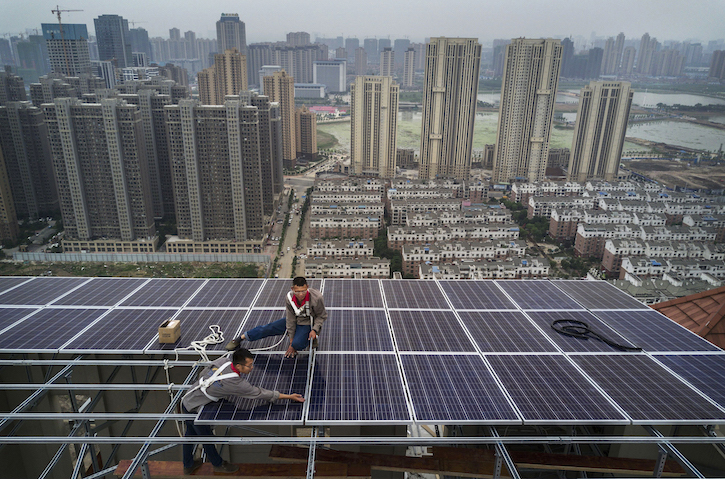
China’s massive urban expansion (100 million more people are expected to become urbanites between 2016 and 2020) means that buildings may hold the key to a transition to a low-carbon economy, according to the Paulson Institute’s Kevin Mo. As much as 40 percent of global carbon emissions come from the building sector. In a recent report, Mo proposes a new insurance scheme to incentivize the development of a green building market, while mapping out the challenges in financing energy-efficient buildings. Mo’s paper inspired an ongoing pilot insurance project, a collaboration between state-owned People’s Insurance Company of China (PICC) and the City of Beijing. Potential collaborations with other Chinese cities are under discussion. Here are five insights from the paper:
- There is a huge financing need for green buildings in China. And government financing won’t be enough. According to Mo, in order to meet energy efficiency goals set for the 13th Five-Year plan period ending in 2020, Chinese cities will need to invest RMB 1.65 trillion ($250 billion) to significantly scale green buildings and retrofit older houses and commercial buildings. The government can’t meet this demand alone—even if it increased its investment in building efficiency by 20% during the 13th Five-Year period, government money would only meet 7.3% of the total financing demand. The financing gap is expected to reach RMB 1.53 trillion ($230 billion).
- New policies are necessary—and available. To attract more private investment into green buildings, the government can choose from a range of options, including the creation of fast approval channels for green projects, creation of a medium- and long-term national plan on energy efficiency buildings, and the development of green building legislation.
- China has employed a number of market-based models for citywide retrofit projects, but few of them have utilized private funding. Mo argues that these models are unsustainable, noting that over-reliance on public finance has led to excessive government intervention, which has deterred private capital from entering the building energy efficiency market.
- Financing for green buildings has been hampered by lack of trust among stakeholders. Green building labels are mostly based on design drawings before construction and may greatly diverge from the building’s actual performance after occupancy, a common problem for almost all green building systems in the world. China’s Ministry of Finance fell short of implementing a green building subsidy program announced in 2012, thereby disincentivizing and discouraging the construction industry.
- One solution is the creation of a green financing mechanism that uses insurance and independent evaluation institutions to provide credit enhancement for high-star green buildings. Such a mechanism could potentially go a long way in developing trust for all the stakeholders in the green building market. If buildings have an insurance guarantee that they are energy efficient in actual performance, with guaranteed energy savings, then they should logically be able to attract more investment from private sector and buyers who can buy worry-free. (In March, the Paulson Institute signed a memorandum of cooperation with PICC on Green Building Insurance that will promote green building development in China. In July, with funding support from World Bank/GEF, the City of Beijing started to work with PICC on the first pilot in China.)


